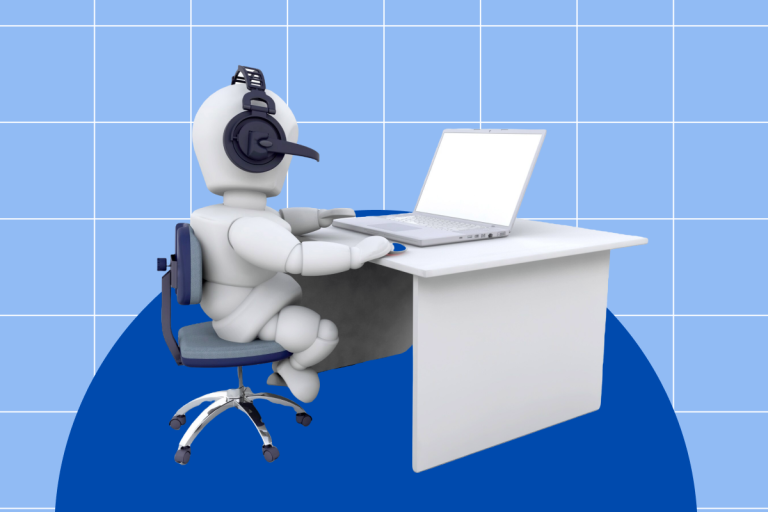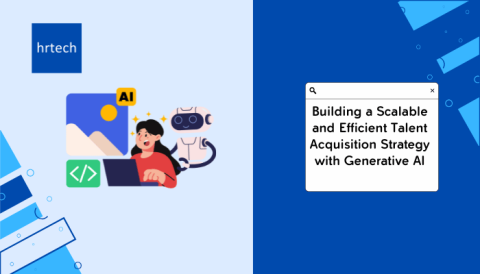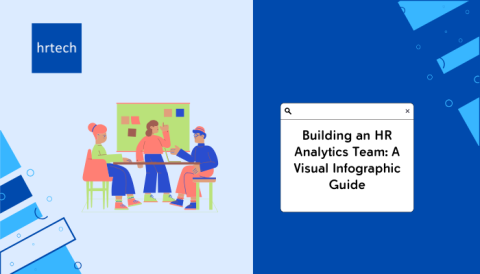Introduction
Employee onboarding is one of the most crucial processes in an organization. A well-structured onboarding experience helps new hires integrate smoothly, boosting their engagement and increasing retention. However, many HR teams still rely on manual onboarding, which is time-consuming, prone to errors, and resource-intensive.
Enter Robotic Process Automation (RPA) in HR onboarding—a game-changing technology that automates repetitive onboarding tasks, reduces administrative burden, and enhances efficiency. RPA allows HR teams to focus on strategic initiatives while ensuring new hires have a seamless, consistent, and engaging onboarding experience.
With platforms like HRtech, HR teams can easily discover a range of RPA solutions tailored to their unique needs.
In this blog, we’ll explore the benefits of RPA in onboarding, key automation processes, best practices, real-world success stories, and future prospects for automation in HR.
What Is Employee Onboarding?
Onboarding is the foundation of an employee’s journey in an organization. It sets the tone for their engagement, productivity, and long-term commitment to the company. A well-structured onboarding process ensures that employees feel welcomed, prepared, and aligned with company values, significantly impacting job satisfaction and retention.
Why is Onboarding Important?
1. Boosts Retention and Reduces Turnover
A poor onboarding experience can make employees feel undervalued or lost in the organization, leading to higher turnover rates within the first few months. Studies show that 69% of employees who experience a strong onboarding process are more likely to stay with the company for at least three years. Whereas, on the other hand, a study has revealed that a good onboarding experience can help in increasing the retention rate of employees by 82%.
A seamless onboarding process, driven by automation and clear communication, helps employees feel more engaged and committed to the organization, reducing hiring costs and maintaining workforce stability.
2. Enhances Productivity and Accelerates Integration
New hires take time to adapt to their roles, workflows, and company culture. However, an effective onboarding process can accelerate this adjustment period. Companies with structured onboarding programs report a 70% increase in employee productivity compared to those with disorganized or manual onboarding.
A well-executed onboarding program provides:
- Clear role expectations and responsibilities.
- Timely access to tools, software, and resources.
- Early exposure to company culture and team collaboration.
- Ongoing training and mentorship programs.
With automation, employees can complete onboarding tasks quickly—such as submitting documents, accessing training materials, and setting up their work environment—allowing them to focus on their core responsibilities sooner.
3. Strengthens Employee Engagement and Job Satisfaction
The first few weeks at a new job can be overwhelming, and a chaotic onboarding experience can make employees feel disconnected. Onboarding is an opportunity for HR teams to create a welcoming and engaging experience, ensuring employees feel supported.
Key elements of an engaging onboarding process include:
- A warm welcome and company introduction to foster a sense of belonging.
- Automated onboarding checklists to keep new hires informed about required steps.
- Frequent check-ins and feedback loops to address concerns proactively.
- Access to mentors or onboarding buddies for a smoother transition.
When employees feel valued and supported from day one, they are more likely to be motivated, engaged, and committed to their roles.
4. Reduces Errors and Compliance Risks
Manual onboarding processes often involve paper-heavy documentation, data entry errors, and inconsistent policy adherence. These inefficiencies can lead to:
- Misfiled or lost documents.
- Incorrect payroll setup or tax details.
- Compliance violations leading to legal issues or fines.
Automating onboarding with Robotic Process Automation (RPA) eliminates these risks by ensuring:
- Accurate and timely data processing.
- Compliance with company policies, tax regulations, and labor laws.
- Secure and centralized storage of employee records.
By reducing errors and improving compliance, organizations protect themselves from financial and legal risks while ensuring a smoother experience for new hires.
HRtech offers you insights into various technology solutions that support seamless and engaging onboarding experiences, right from day one.
Now that you see why onboarding is crucial, let’s dive into how RPA takes this process to the next level.
Key Benefits of RPA in Employee Onboarding
Employee onboarding is essential but often slow and manual. RPA streamlines the process by automating paperwork, data entry, and interdepartmental coordination, ensuring faster, error-free, and more efficient onboarding.
1. Faster Onboarding: From Weeks to Hours
Onboarding a new employee typically involves document submission, HR verification, IT setup, payroll registration, compliance checks, and benefits enrollment. When done manually, these steps can take weeks, delaying an employee’s ability to start contributing effectively.
How RPA Accelerates Onboarding:
- Automates document processing – Instantly extracts key data from resumes, tax forms, and identification documents, updating HR systems in real time.
- Speeds up background verification – Bots retrieve and cross-check data from multiple sources, completing verifications within minutes instead of days.
- Expedites system access and IT provisioning – Automatically sets up email accounts, grants access to company portals, and assigns necessary software licenses.
- Reduces overall onboarding time – What once took weeks can now be completed in days or even hours, ensuring employees are ready to work sooner.
Impact: Faster processing means higher productivity from day one and fewer bottlenecks for HR teams.
2. Enhanced Employee Engagement and Satisfaction
First impressions matter. A slow, disorganized onboarding process can leave new hires feeling frustrated, disengaged, and undervalued. When employees struggle with paperwork, IT access delays, or incomplete training schedules, their enthusiasm for the new role can quickly fade.
How RPA Boosts Engagement:
- Ensures seamless IT and system access – New hires gain instant access to company emails, communication tools, and HR systems without delays.
- Automates personalized onboarding journeys – Bots send welcome emails, training schedules, and HR policy documents automatically, making employees feel valued from day one.
- Proactively schedules training and orientation sessions – Ensures employees are enrolled in mandatory training, reducing confusion about next steps.
- Reduces frustration with HR processes – Employees no longer need to chase down HR for forms or IT for system access—everything is automated and ready for them.
Impact: Employees feel supported, valued, and ready to contribute immediately, leading to higher job satisfaction and long-term retention.
3. Significant Time and Cost Savings
HR teams spend countless hours on manual onboarding tasks like data entry, offer letter generation, payroll setup, and benefits registration. These administrative burdens not only drain resources but also increase the risk of human errors.
How RPA Saves Time and Money:
- Eliminates manual data entry – Bots handle repetitive tasks like entering employee details into HR systems, saving HR professionals dozens of hours per hire.
- Reduces administrative costs – Automating onboarding processes can cut labor costs by up to 40%, translating into millions in annual savings for large organizations.
- Minimizes costly onboarding mistakes – Errors in payroll setup, benefits selection, or compliance paperwork can result in legal issues and rework. RPA ensures accuracy, reducing these risks.
- Optimizes HR resources – By automating routine tasks, HR teams can focus on strategic initiatives like employee engagement, talent development, and culture building.
Impact: Businesses save money, reduce HR workload, and improve operational efficiency, allowing HR teams to focus on what truly matters—people.
4. Standardization and Consistency Across the Organization
Manual onboarding processes often vary across different departments or locations, leading to inconsistencies. One team may follow a different procedure than another, resulting in gaps in compliance, delays in system access, or errors in documentation.
How RPA Ensures Consistency:
- Creates a standardized onboarding workflow – Every employee, regardless of role or location, experiences the same structured and efficient onboarding process.
- Ensures compliance with regulations – RPA enforces company policies and legal requirements by ensuring all necessary steps (such as tax form submissions and policy acknowledgments) are completed correctly.
- Automatically updates employee records – Reduces discrepancies in HR databases by ensuring accurate, real-time updates across systems.
- Improves coordination between HR, IT, and payroll teams – Automation streamlines cross-departmental collaboration, ensuring a smooth onboarding experience.
Impact: Employees receive a seamless and error-free onboarding experience, while organizations maintain compliance and operational consistency.
The traditional onboarding process is time-consuming, error-prone, and frustrating for both employees and HR teams. RPA revolutionizes this process by automating repetitive tasks, reducing errors, saving time and costs, and ensuring a seamless employee experience.
HRtech‘s comprehensive platform can connect you with the most efficient RPA tools to streamline employee onboarding and reduce wait times.
Ready to see how it all happens? Let’s break down the key processes involved in automating onboarding with RPA.
Key Processes for Automating Onboarding with RPA
Onboarding involves multiple administrative tasks that, when handled manually, can be slow and error-prone. RPA streamlines these processes, ensuring speed, accuracy, and efficiency.
1. Automating Data Entry for New Hire Documentation
- Extracts and verifies data from resumes, tax forms, and IDs using OCR.
- Updates HRMS, payroll, and benefits databases in real time.
Impact: Eliminates redundant data entry, reducing errors and processing time.
2. Automating User Account Creation & System Access
- Generates corporate emails and assigns login credentials.
- Grants role-based access to necessary applications.
Impact: Employees can start working from day one, reducing IT workload.
3. Streamlining Equipment & Facility Assignments
- Triggers alerts for workstation and asset allocation.
- Updates asset tracking systems for better management.
Impact: Ensures laptops, ID badges, and office essentials are ready on time.
4. Automating Employee ID Creation & Payroll Enrollment
- Generates employee IDs and updates security databases.
- Automates payroll registration and benefits enrollment.
Impact: Employees get paid on time and gain immediate access to benefits.
Implementing RPA doesn’t stop at knowing its processes; there’s a strategy involved to ensure it fits perfectly within your HR operations. Let’s take a look at the important strategies involved in it.
HRtech helps HR teams swiftly identify automation processes that best fit their specific onboarding needs.
RPA Implementation Strategy for Employee Onboarding
Implementing RPA in onboarding requires a structured approach to ensure seamless integration and maximum efficiency.
1. Assessing and Mapping Onboarding Processes for Automation
HR teams should identify repetitive, rule-based tasks that RPA can handle efficiently, such as:
- Background verification and document validation
- Automated data entry for employee records
- IT system access setup and credentials assignment
- Payroll and benefits registration
Goal: Identify high-impact automation opportunities to streamline onboarding.
2. Ensuring Collaboration Between HR and IT Teams
For successful RPA deployment, HR and IT must work together to integrate automation with existing HR software like SAP, Workday, and Oracle.
- HR teams define workflow requirements.
- IT ensures seamless bot integration with HR databases and security protocols.
Outcome: A unified, automated onboarding system with minimal disruptions.
3. Engaging System Integration Specialists
Bringing in RPA experts helps configure workflows, ensure compliance, and optimize system efficiency.
- Specialists customize automation rules for HR processes.
- They ensure compatibility with HR and IT infrastructure.
Benefit: Smooth implementation with reduced technical issues.
4. Ongoing Monitoring and Optimization by HR Teams
Once RPA is in place, HR must regularly track performance, ensure compliance, and make necessary adjustments.
- Monitor both accuracy and efficiency.
- Address issues and optimize processes as needed.
Result: Continuous improvements in onboarding speed, accuracy, and employee experience.
By following this strategy, organizations can maximize RPA’s potential, reduce onboarding time, and enhance overall efficiency.
By leveraging HRtech‘s platform, HR teams can gain access to expert advice and tailored solutions for successful RPA deployment.
Moving on, let’s explore some best practices for integrating RPA in employee onboarding.
Best Practices for RPA in Employee Onboarding
To maximize the benefits of RPA in onboarding, organizations must balance automation with a human touch while ensuring seamless integration and continuous improvement.
1. Balancing Automation with Human Interaction
Automation streamlines processes, but a personal touch is key to making new hires feel valued. HR teams should complement RPA with:
- Personalized welcome messages from managers or leadership
- Virtual or in-person onboarding sessions for team introductions
- Mentorship programs to help new employees integrate smoothly
Why it matters: Employees who feel connected from day one are more engaged and productive.
2. Continuous Monitoring and Optimization
RPA implementation is not a one-time setup—it requires ongoing performance tracking and fine-tuning for optimal efficiency.
- Regularly review bot performance metrics (processing time, accuracy rates, error reduction)
- Gather employee and HR feedback to refine automation workflows
- Identify areas where manual intervention is still needed and adjust accordingly
Result: A continuously improving onboarding experience with fewer bottlenecks.
3. Seamless System Integration for Maximum Efficiency
For automation to be truly effective, RPA bots must integrate smoothly with key HR and IT systems, including:
- HR management platforms (Workday, SAP, Oracle)
- Payroll and benefits systems
- IT access management tools (Active Directory, Okta)
Outcome: A well-connected onboarding ecosystem where data flows effortlessly, reducing manual workload and errors.
With these practices in your toolkit, you’re on the path to transforming your HR processes. Let’s wrap up with some final thoughts.
Conclusion
RPA is revolutionizing HR onboarding, making it faster, cost-effective, and highly efficient. Automating tedious onboarding tasks enhances new hire experiences, reduces HR workload, and ensures compliance.
With the right implementation strategy, security measures, and best practices, businesses can successfully integrate RPA into their HR processes.
As artificial intelligence and machine learning evolve, RPA will play an even greater role in HR functions, from performance management to employee engagement analytics.
Ready to streamline your HR processes? Explore the latest HR technology solutions at HRtech, the largest HR technology marketplace in Asia and the Middle East.
Visit HRtech today and explore the future of HR automation!




